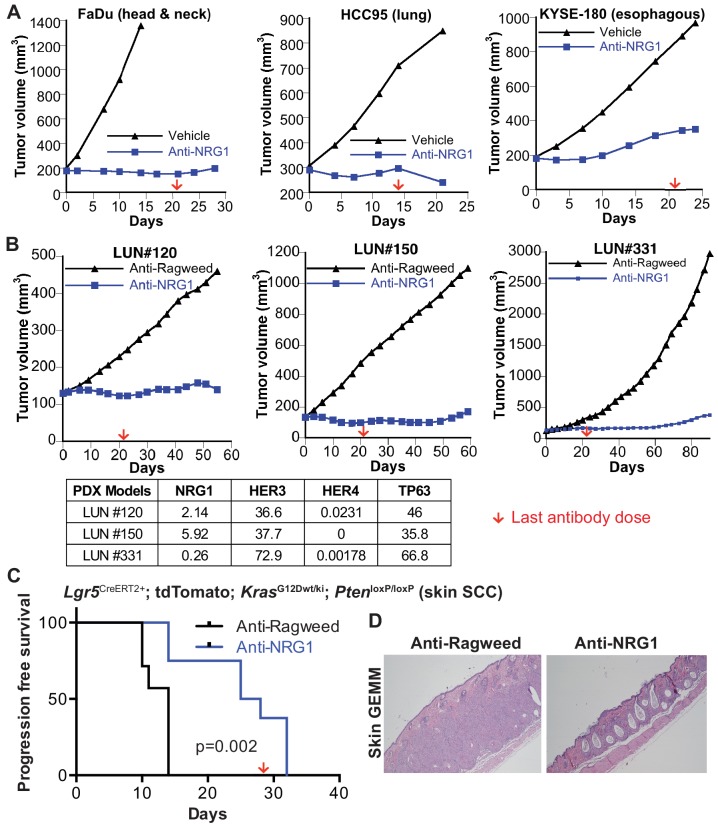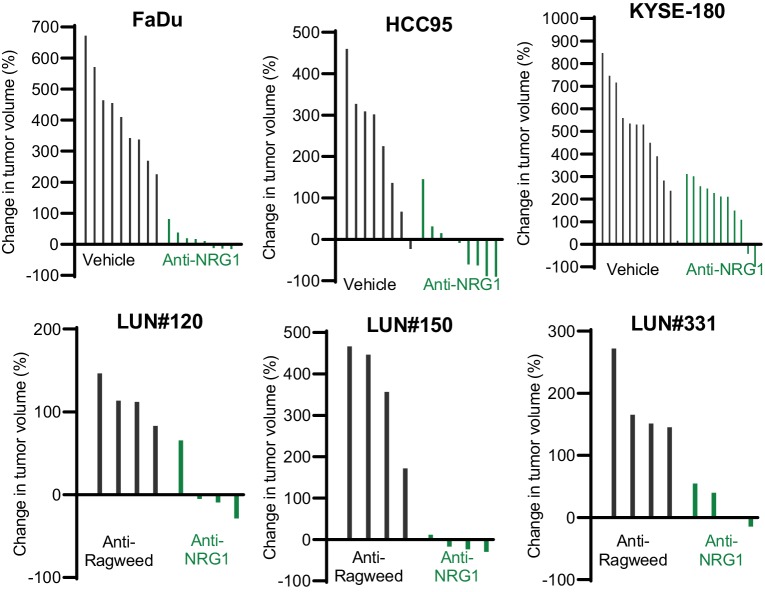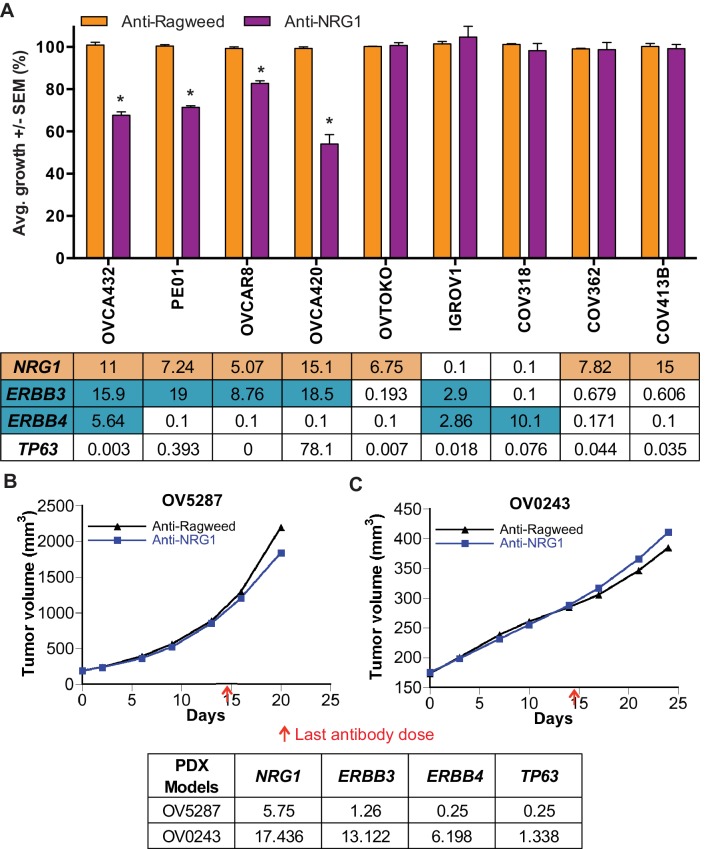Figure 3. Anti-NRG1 significantly inhibits the tumor growth in vivo of SCCs that express both NRG1 and ERBB3.
Effect of anti-NRG1 or anti-Ragweed (control) antibodies in (A) FaDu (head and neck), HCC95 (lung) and KYSE-180 (esophagus) SCC cell lines in preclinical mouse xenograft models, N = 8–12 mice/group, (B) Lung SCC PDX models, n = 4 mice/group, and (C) Lgr5CreERT2; Ptenflox/flox; KrasLSL-G12D/+ skin GEMM, n = 7–8 mice/group. Statistical significance was determined by Log-rank test. Red arrow indicates the time of the final antibody dose. (D) H and E staining for GEMM skin at the end of study.



